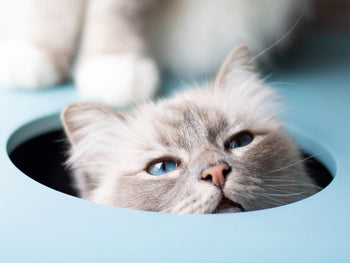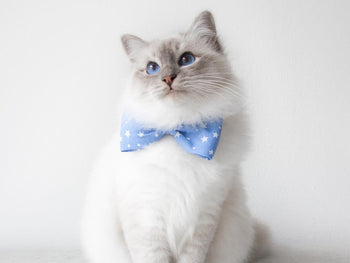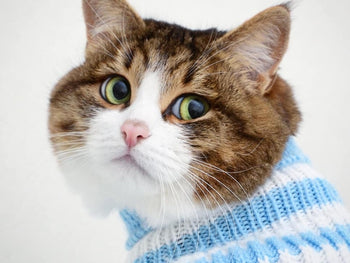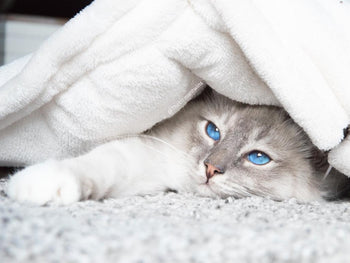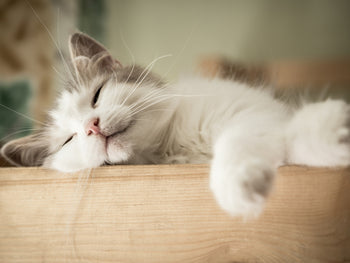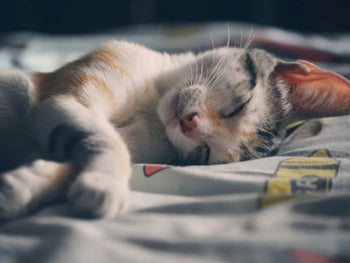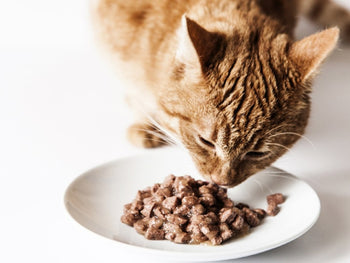
Spaying is a surgical procedure that would preempt all sorts of troubles that the average cats may cause to their owners, fellow pets and themselves. The entire operation usually lasts for a few moments and most of the felines could go home within the day. Still, to the frustration of pet owners, many cats made it through the procedure without running into complications only to start jerking the stitches nonstop. Obviously, if you see your spayed cat pulling out stitches, you have to intervene at once before things get ugly.
So you have no idea how to tell your fluffy friend that it needs to stop messing with the stitches? If that happens to be the case then you have come to the right place.
Why The Felines Do That

In humans, it's natural to feel itchy as a particular wound heals and the same also applies to cats. Most of the time, cats shall resort to licking to relieve the irritating sensation regardless of the final outcome.
A common misconception persists among cat parents these kinds of days is that the saliva of the felines is antibacterial which accelerates the healing process. Unfortunately, if you actually allow the pets to as they please, the risk of infection, inflammation and alike increases significantly. Though the surgical stitches would not become undone easily in the usual cases, you have to remember that cats have a reputation for being resourcefulness. That means if you give them time, the pets should get to the stitches eventually.
How To Prevent Cats From Undoing The Stitches: Viable Methods

Needless to say, it's impossible for you to follow your furball all day in order to tell it to just leave the stitches alone. Since the felines only need an instance to reach the previously operated site, people need to use something that actively stops them from doing so. Here are a couple of popular options that you always need to keep in mind.
-
Elizabeth Collar
Also known as "the cone of shame", Elizabeth collar effectively deters the pets from licking, biting and scratching their body. Pets that recently went through surgery tend to receive the collar so they don't unwittingly pry open the incision. Considering the usefulness of Elizabeth collar, it's strongly recommended that you invest in one if you notice your newly spayed cat pulling out stitches. While it's highly like that your cat is going to protest vigorously about such a decision through frequent vocalization, you must be firm here.
-
Infant T-Shirt
Worry that the cone may stress your cat too much? If that is your main concern, consider giving the feline a baby-sized T-shirt. In most of the cases, the shirt shall serve as an excellent cover for the stitches underneath without also sending the pets into a depression. Your fluffy friend probably hates the shirt nonetheless but it's a more comfortable alternative compared to E-collar on average. Still, you have to be careful: pick a shirt that uses thick fabric so your cat could not dig through it to access the stitches.
-
Special Bandages With Taste Repellants
On the markets nowadays, it's a breeze to obtain bandages designed specifically to discourage pets from pulling them off. Such bandages contain several coatings on top that feature non-toxic substances with bitter tastes. As cats hate putting things that taste bitter into their mouth, which is why it's a pain to give them oral medicine, the bandages excel at protecting surgical incisions. Usually, you are going to need several bandages to properly cover the stitches but after that, you may rest assured knowing that the pet would behave appropriately from now on.
Note: There are various solutions available when it comes to spayed cat pulling out stitches so choose whatever you like. However, no matter what you use here, keep it on all the times instead of taking it on and off. Again, cats only need a small opening to mess up the stitches so it's widely advised that you think of the consequences before acting.
Check us out for further detailed cat's healthy guide!
Frequently Asked Questions And Answers About Stitches In Spayed Cats.

-
When do the stitches need to be removed on average?
To answer that question, it's essential that you take the type of suture that the vets use into account. In the case the vets use dissolvable stitches (which dissolve over time), removal is unnecessary. On the other hand, if the vets use non-dissolvable stitches, you must return to the clinic to get the sutures out of your furball within 10 – 14 days after the operation. Of course, depending on the circumstance, the actual time varies greatly from case to case. That is why it's a good idea to consult your veterinarian beforehand in order to know the exact date.
-
Is it wise to restrict the movement of my cat?
Technically, every procedure that requires surgery in cats always requires some time for the wound to heal properly including spaying. Considering the size of the incision, it's strongly recommended that pet owners restrict the activities of recently spayed cats for a couple of days. Most of the time, the preferred approach is to lock the felines in a small room of the house with foods, waters and litters. Every once in a while, cat parents should drop by to quickly check the situation.
-
How to best protect the surgical stitches in most cats?
Besides preventing the pets from pulling out the stitches, people also need to clean up the discharges around the site. In addition, it's necessary to give the felines medication as directed by the vets. If you see that your spayed cat pulling out stitches regardless of what you have done, contact the vets immediately. Cats normally settle in as time passes by but in case they refuse to leave the stitches alone, there may be some underlying issues. When it comes to the well-being of your fluffy friend, it's pretty much impossible to be too careful.
Looking for more interesting Cat Tips & Facts? Visit Cattybox !
